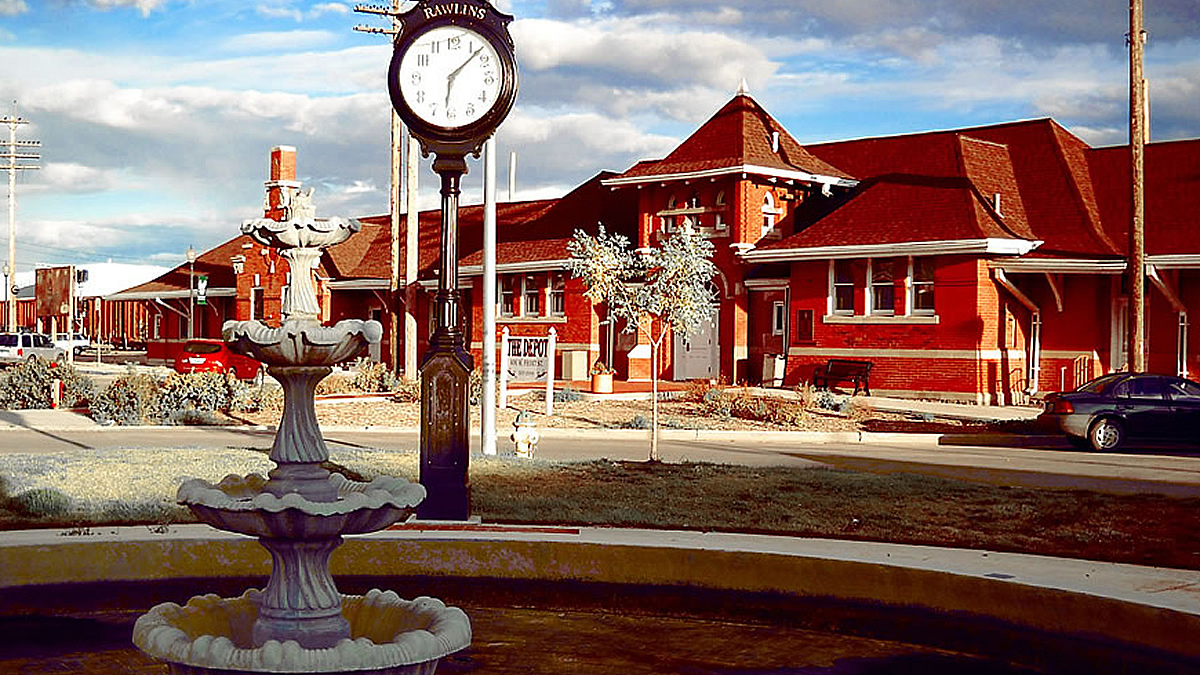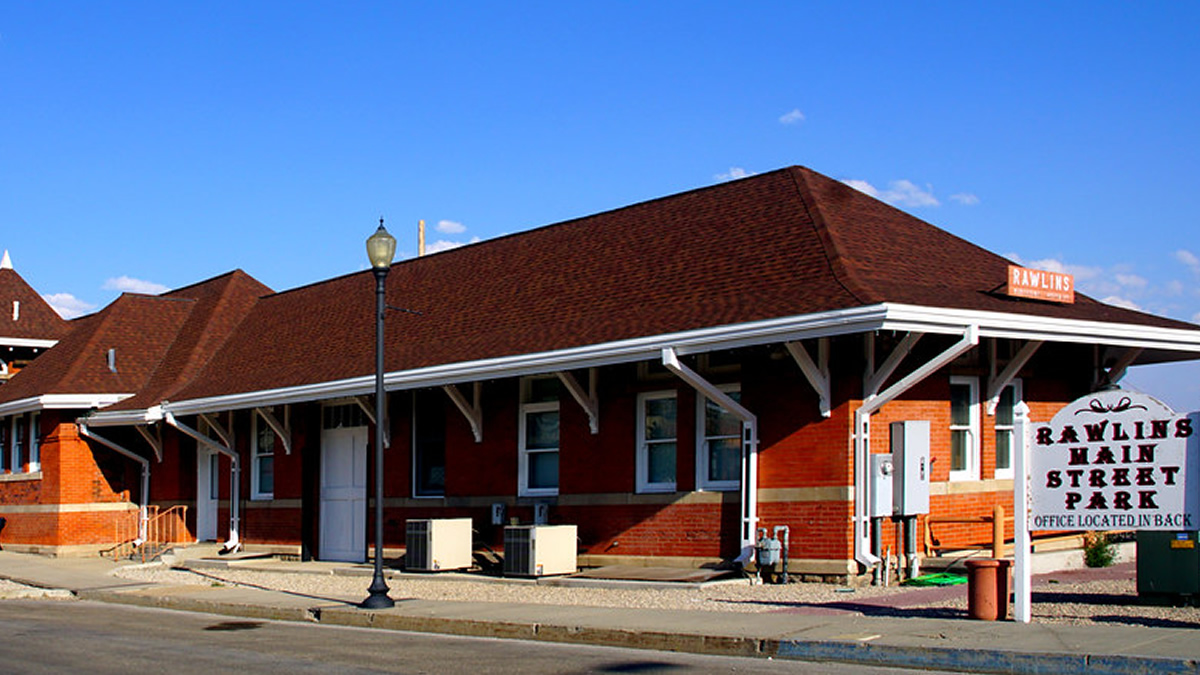Union Pacific Railroad Depot: A Historic Gem in Rawlins, Wyoming
Rawlins played a significant role in transportation during the late 19th century when Union Pacific selected it as a division point due to its location near a permanent water source and semi-arid climate. The town became a transportation hub for Northern Colorado and interior Wyoming, with stage lines running northward to Lander and southward to Saratoga and Baggs, while the White River line ran south to Meeker, Colorado.
The Old Union Pacific Train Depot, located at 400 West Front Street in Rawlins, was constructed at the end of the 19th century and gifted to the City of Rawlins.
It was later refurbished in the 20th century and now serves as a meeting venue with rooms and a kitchen designed to accommodate small to medium-sized groups.
The Historic Depot, a former train station, is available for private rentals and has hosted various events such as weddings, receptions, birthdays, and graduation parties. It has two rooms, the Center room and the East room, which can be rented individually or together. The Center room includes the use of a non-industrial kitchen and can accommodate up to 101 people, while the East room can accommodate up to 93 people. Rooms can be rented for a 24-hour period starting at 7:00 am for $100.00 per room per day with a $150.00 deposit per room.
The Union Pacific Railroad Depot
Built in 1901, the Union Pacific Railroad Depot is a one-story brick and granite building featuring elements of Richardsonian Romanesque architecture. A baggage and telegraph addition was constructed on the west side of the building between 1901-1903, and an Eating House addition was added on the east side between 1903-1912. The Depot is a testament to the pivotal role that the railroad played in the growth and development of Rawlins, serving as a catalyst for settlement and supporting the expansion of other industries within the city. Its significance as a transportation hub is evident in its architecture and enduring legacy.







